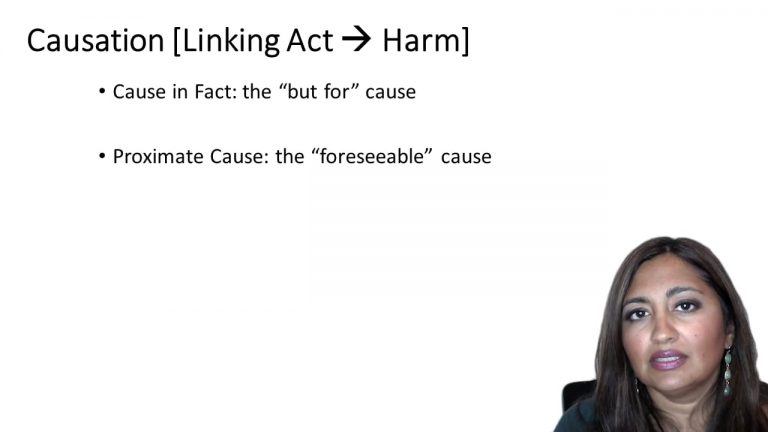Criminal Law Keyed to Dressler
People v. Rideout

ProfessorScott Caron
CaseCast™ – "What you need to know"
Facts
Rideout (D) was intoxicated while driving and collided his SUV with Reichelt’s car, which came to a stop on the middle of the road as a result. Neither Reichelt nor his passenger Keiser were seriously injured. They left their car and got to the road margin, checked on Rideout and then, recognizing the danger that other cars could hit the unlit car, went back to the stopped car to see if they could turn on its flashers. While there beside the car, an oncoming vehicle hit Keiser, killing him. Rideout was convicted of driving while drunk or visibly impaired and thus causing death. During the jury trial the judge instructed the jury on causation-in-fact but not on proximate cause or superseding intervening causes. The instruction included the rule that one of several causes is taken to be a substantial cause of death if but for that cause death would not have happened, unless as a highly unnatural result of the original cause. The jury was also told that for a cause to be a superseding cause it must be the sole cause. Rideout argued that the court’s instructions to the jury were wrong. He claimed that he was not the proximate cause of Keiser’s death. He appealed, and was granted review by the intermediate court of appeals.
Only StudyBuddy Pro offers the complete Case Brief Anatomy*
Access the most important case brief elements for optimal case understanding.
*Case Brief Anatomy includes: Brief Prologue, Complete Case Brief, Brief Epilogue
- The Brief Prologue provides necessary case brief introductory information and includes:
Topic:
Identifies the topic of law and where this case fits within your course outline.Parties:
Identifies the cast of characters involved in the case.Procedural Posture & History:
Shares the case history with how lower courts have ruled on the matter.Case Key Terms, Acts, Doctrines, etc.:
A case specific Legal Term Dictionary.Case Doctrines, Acts, Statutes, Amendments and Treatises:
Identifies and Defines Legal Authority used in this case.
- The Case Brief is the complete case summarized and authored in the traditional Law School I.R.A.C. format. The Pro case brief includes:
Brief Facts:
A Synopsis of the Facts of the case.Rule of Law:
Identifies the Legal Principle the Court used in deciding the case.Facts:
What are the factual circumstances that gave rise to the civil or criminal case? What is the relationship of the Parties that are involved in the case.Issue(s):
Lists the Questions of Law that are raised by the Facts of the case.Holding:
Shares the Court's answer to the legal questions raised in the issue.Concurring / Dissenting Opinions:
Includes valuable concurring or dissenting opinions and their key points.Reasoning and Analysis:
Identifies the chain of argument(s) which led the judges to rule as they did.
- The Brief Prologue closes the case brief with important forward-looking discussion and includes:
Policy:
Identifies the Policy if any that has been established by the case.Court Direction:
Shares where the Court went from here for this case.
Topic Resources

 7m 12s
7m 12s